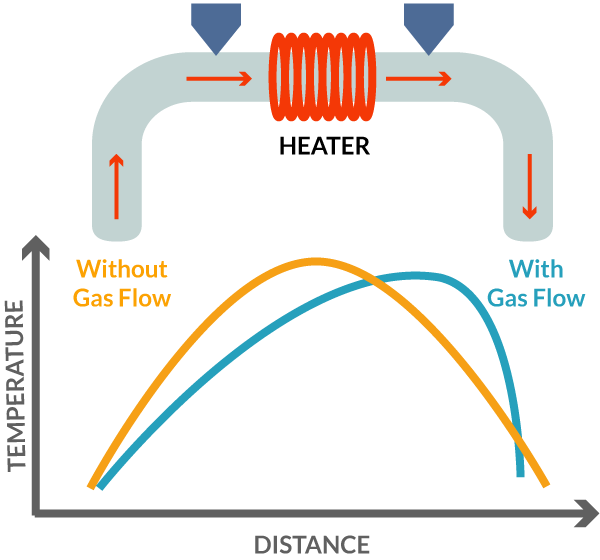Mass Flow Controller Theory

Mass flow controllers meet the most stringent requirements for all types of applications needing to monitor and regulate the flow of process gas. Thanks to the high quality of mechanical and electronic components, the reading error is much lower than normal flow meters (1% compared to full scale for all similar models), the repeatability is 0.2% compared to full scale, and the flow regulation is very fast (solenoid or diaphragm control valves). In addition the construction materials (AISI 316L stainless steel, Viton or metallic seals, depending on the application) allow its use with most process gases. Flow measurement is not affected by ambient temperature, gas pressure and mounting position.
The main components of a mass flow controller are sensor, bypass, control valve and seals.
The sensor is the mass flow controllers central element: it consists of a very thin capillary tube (stainless steel), wrapped in a resistor. Without gaseous flow the temperature inside the tube is balanced between the two ends of the sensor. When the gas passes through the capillary tube the temperature curve is distorted, thus creating a temperature differential which is measured, amplified and linearized in such a way as to create a signal capable of controlling a proportional control valve.
The bypass is located downstream of the sensor and generally consists of very thin stainless steel circular “slats” or a metal “cone”. Its main purpose is to uniformly diffuse the gas flow inside the instrument and, since a very small percentage of the total gas passes through the sensor, to calculate the total flow in relation to the sensor flow.
The control valve can be of three types:
Thermal valve, characterized by a response time of about 6 seconds (from 0 to 100% of full scale), normally open.
Solenoid valve, faster than the thermal valve (2 seconds between 0 and 100% of full scale), which can be normally open or closed.
Piezo-electric valve, very fast (0.2 seconds between 0 and 100% of full scale), available in normally open or closed version. This type of valve is mounted on the mass flow controllers in an internally electropolished version, for applications with hyper-pure gases.
The seals can be elastomeric or metallic, in order to guarantee a suitable use for all types of gases.